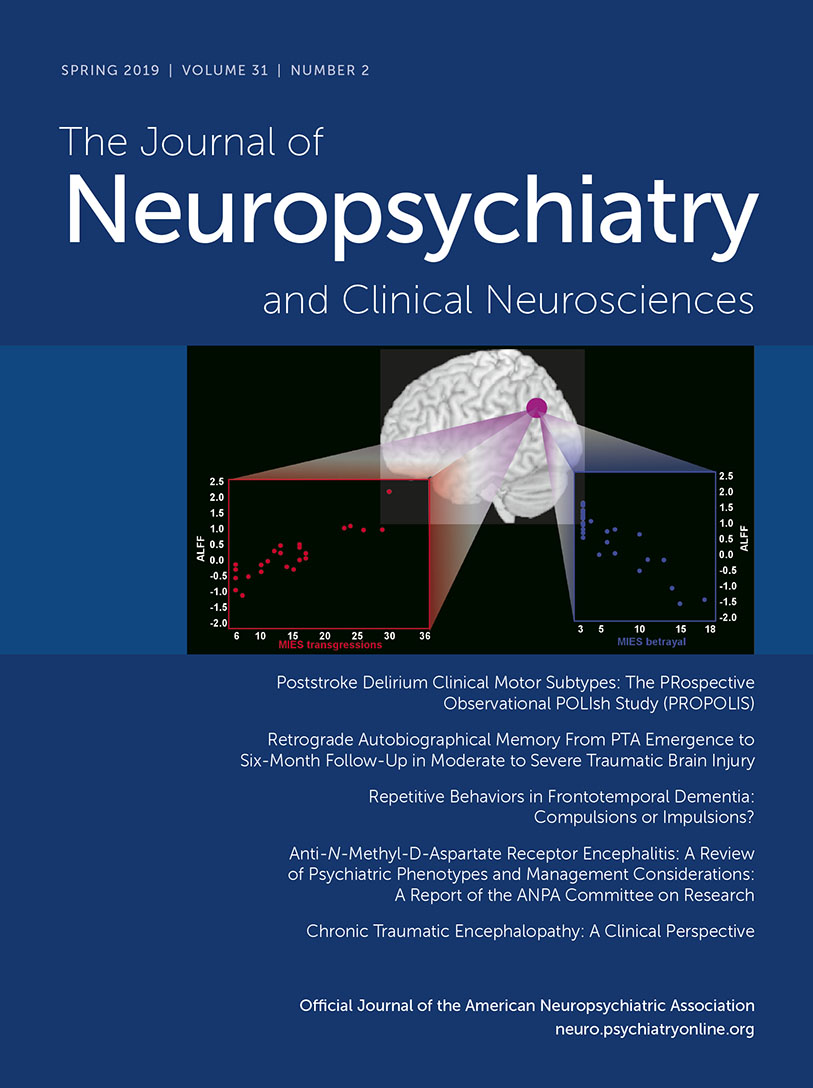Profile of Anger in Acute Stroke: A Multifactorial Model of Anger Determinants
Abstract
Objective:
Higher levels of anger can have a major impact on treatment and recovery among stroke patients.
Methods:
The authors identified the presence of anger in patients with acute stroke, as well as state and trait anger and anger expression and control, and analyzed its association with demographic, clinical, brain lesion, and psychosocial variables. The authors screened anger prospectively in 114 consecutive patients by using the State-Trait Anger Expression Inventory-2, which enabled them to distinguish between the experience, expression, and control of anger.
Results:
State anger was detected in 21 (18%) patients, whereas trait anger was present in 22 patients (20%). The best regression model revealed that age, hypertension, complaints about environment, anxiety symptoms, and disability were independent predictive factors for anger (R2=54%).
Conclusions:
Anger appears to be explained by prestroke variables such as age, hypertension, and the profile of anger, stroke itself as a sudden and potentially disabling condition, the environment, and the psychological and functional consequences of stroke.



